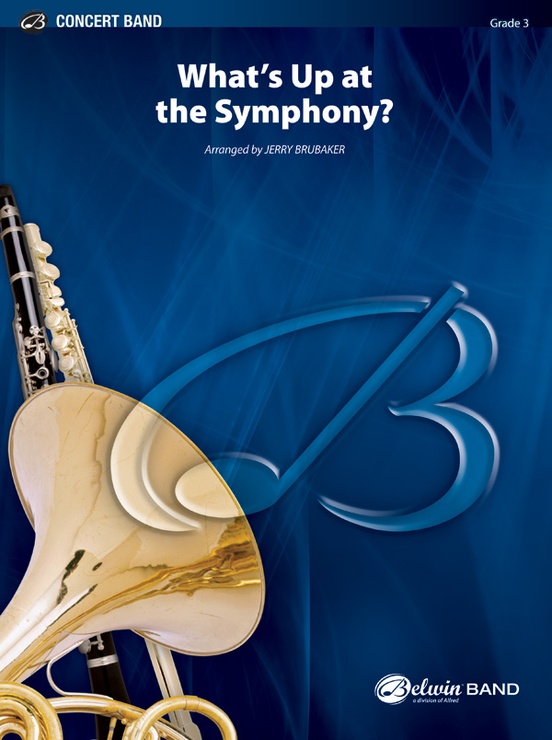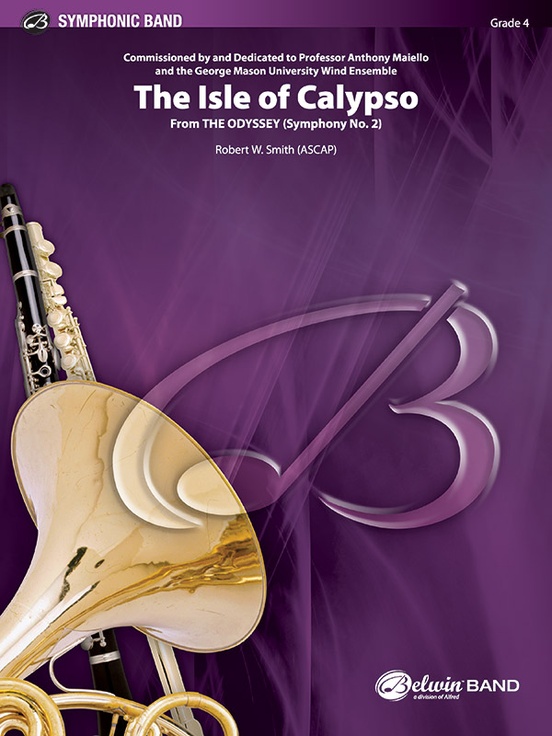Results
-
 £73.50
£73.50The Isle of Calypso (from The Odyssey, Symphony No.2) (Concert Band - Score and Parts) - Smith, Robert W.
The third movement of Robert W. Smith's second symphony The Odyssey, is serene in nature. Special effects depict the passing of time and add a mood of intrigue. Quiet and reflective, this is a sure winner on any program. Program it alone or with the other movements of The Odyssey, The Iliad and The Winds of Poseidon. Duration: 4.30
Estimated dispatch 7-14 working days
-
 £59.95
£59.95Rhapsody On The Minstrel Boy (Concert Band - Score and Parts) - Farnon, Robert
The master arranger in more pensive mood, with a subtle score of this Irish folk tune requiring sensitive direction to reveal all its musicality.
Estimated dispatch 7-14 working days
-
 £11.95
£11.95Rhapsody On The Minstrel Boy (Concert Band - Score Only) - Farnon, Robert
The master arranger in more pensive mood, with a subtle score of this Irish folk tune requiring sensitive direction to reveal all its musicality.
Estimated dispatch 7-14 working days
-
 £45.54
£45.54Day of the Shofar
Colorful, dramatic and musical are all words which best describe this work by the writer of ``Alleluias.'' It begins in a mysterious mood featuring unusual colors. Horns move to the forefront followed by contrasting sections of lyrical and marcato styles all leading to the brilliant climax.
Estimated dispatch 7-14 working days
-
 £76.95
£76.95What's Up at the Symphony?
Bugs and Porky invite you to take part in this classic(al) cartoon medley. All the greats are here: "This Is It," "William Tell," "Barber of Seville," "The Merry-Go-Round Broke Down," Liszt's "Hungarian Rhapsody," Brahms' "Hungarian Dance," "The Ride of the Valkyries," and "Merrily We Roll Along." Every cartoon mood and effect you could expect. You've got to get up pretty early on Saturday morning to hear a medley better than this! (4:45)
Estimated dispatch 3-5 working days
-
 £73.50
£73.50The Isle of Calypso (from (Symphony No. 2)) - Robert W. Smith
The third movement of Robert W. Smith's second symphony , is serene in nature. Special effects depict the passing of time and add a mood of intrigue. Quiet and reflective, this is a sure winner on any program. Program it alone or with the other movements of , (BDM00052) and (BD9923). (4:27)
Estimated dispatch 3-5 working days
-
 £53.99
£53.99Fernando's Fandango - Ed Huckeby
In the mood for a lively Spanish tune for your concert? Look no further! "Fernando's Fandango" is very playable, but will make your young band "sound like a million bucks." Contrasting dynamic styles and simple syncopations make this piece a good teaching tool, yet will have your audience members on their feet asking for more. Very nice!
Estimated dispatch 7-14 working days
-
 £49.00
£49.00Fernando's Fandango (Concert Band - Score and Parts) - Huckeby, Ed
In the mood for a lively Spanish tune for your concert? Look no further! Fernando's Fandango is very playable, but will make your young band "sound like a million bucks." Contrasting dynamic styles and simple syncopations make this piece a good teaching tool, yet will have your audience members on their feet asking for more. Very nice!Duration: 1.45
Estimated dispatch 7-14 working days
-
 £176.00
£176.00GLENN MILLER'S GREATEST HITS (Advanced Concert Band) - Tailor, Norman
Includes: American Patrol; String of Pearls; Moonlight Serenade; Tuxedo Junction; Little Brown Jug; Chattanooga Choo Choo; St Louis Blues; In the Mood. Duration: 7:15
Estimated dispatch 7-14 working days
-
 £309.99
£309.99Symphony No. 9, Op. 160 - James Barnes
Premiered on September 21, 2018 in Lawrence, Kansas by the University of Kansas Wind Ensemble (Dr. Paul Popiel, conducting), James Barnes' Ninth Symphony was composed between January and late June of that same year. This large work was commissioned by a consortium of twenty-one college bands, community bands, professional bands and individuals to help mark the 70th birthday of the composer (b. 1949). It is an expansive forty-minute work in four movements, of which the composer writes, This is my last symphony... this work represents a compendium of all that I have learned during the fifty years of composing and scoring for this wonderful new medium: the modern wind band. The first movement, subtitled Elegy, is based around G minor. It is the longest movement of the symphony. Tragic and despondent in character, it is cast in sonata-allegro form. The second movement is entitled Scherzo. Barnes claims that I have always wanted to write a waltz, and that is how this movement is cast, in a modified rondo form in D minor. In contrast to the mood of the first movement, the scherzo is a delightful posy of expansive melody, splashy color, humor and rhythm. The third movement, which is in a modified tertiary form, is entitled Night Music. In contrast to the scherzo, this movement begins with a mysterious incantation, first displayed by solo Alto flute. The music becomes even darker and more mysterious, while overall the movement effectively expresses an otherworldly mood, ending with a solo soprano offstage which suddenly emerges, eerily singing a modified version of the opening incantation. Cast in sonata-allegro form, the fourth movement is most definitely a rousing Finale, beginning with a brilliant fanfare and undergoing several mood transformations before emerging into the final coda, ending the symphony with an energetic splash of color.
Estimated dispatch 7-14 working days
